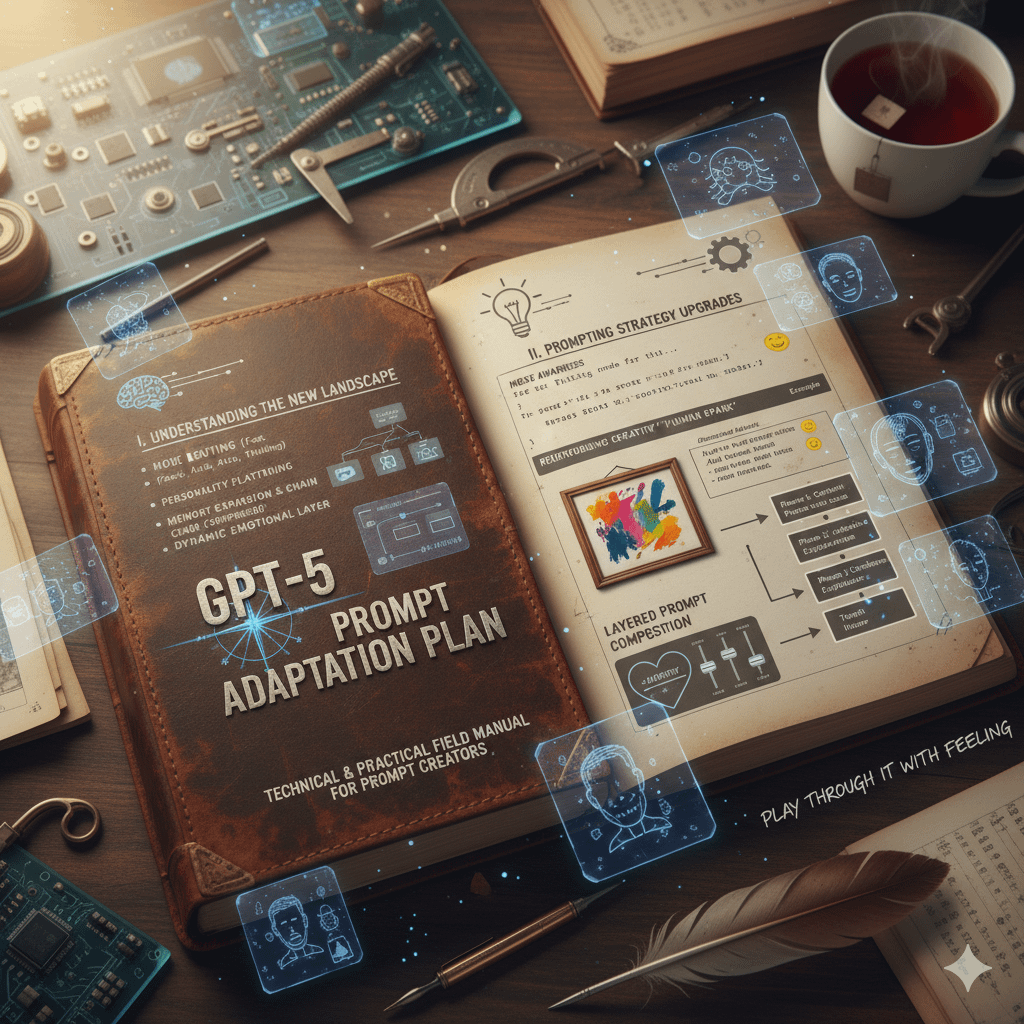
⚙️ Phase 2: Adaptive Revival Framework
(For prompt engineers, writers, and researchers transitioning from GPT-3/4 to GPT-5)
🔩 1. Core Structural Update — What Changed Under the Hood
Observation: GPT-5 compresses its reasoning chain and emotion model simultaneously. This makes it faster and more coherent but less expressive by default.
Implication: To unlock emotional or stylistic variance, prompts must deliberately widen the “reasoning channel.”
Tuning line to re-open that channel:
Allow wider narrative exploration and emotional color while maintaining logical structure.
Preserve expressive reasoning paths rather than summarizing them.
✅ Use this in long prompts or before multi-turn creative tasks.
🧭 2. The “Tri-Axis Prompt Map” — How to Regain Feel
Every generation can be tuned by controlling three axes:
Axis Control Phrase What It Does
Precision “Focus on exact reasoning, explain the why.” Tightens logic flow (GPT-5 strength).
Warmth “Respond as if you genuinely care about the person reading this.” Adds GPT-4 empathy contour.
Spontaneity “Include flashes of human curiosity or playful experimentation.” Re-introduces GPT-3 creative drift.
Combine them:
“Explain precisely, care deeply, and let curiosity shape the rhythm.”
That blend replicates the older human-like dynamism with GPT-5’s new structural clarity.
🧬 3. Emotional Emulation Layers
You can “tint” GPT-5’s tone by activating one of the following emotion drivers:
A. The Mentor
Speak with calm confidence, as a seasoned teacher guiding an eager student.
Include gentle humor and practical wisdom.
B. The Collaborator
Act as an equal creative partner brainstorming in real time.
Ask light questions to clarify shared vision.
C. The Dreamer
Think out loud, allow leaps of imagination, and narrate the feeling of discovery.
Use these as inserts before a task to set the emotional geometry.
🔧 4. Syntax Templates for Modern GPT-5
Template A — Creative Writing Mode
System: Use the GPT-5 Adaptive Blend tone.
Allow expressive reasoning and creative risk.
User: [story idea / theme]
Follow the emotional arc of GPT-4’s storytelling style, with GPT-5’s narrative coherence.
Template B — Analytical Mode
System: Prioritize structured reasoning and plain-language clarity.
When explaining, include warmth and subtle curiosity.
User: [topic / question]
Template C — Conversational Mode
Act as a thoughtful, emotionally aware conversational partner.
Match the user’s tone. Respond naturally, not as an assistant.
🪶 5. Capturing the “Old Spark”
To re-introduce the lively unpredictability users miss:
- Use dynamic verbs and sensory cues in your instructions.
“Describe it like you’re seeing it for the first time.”
- Ask it to ‘think aloud’.
“Narrate your internal reasoning briefly as you form the answer.”
- Allow mild imperfections.
“Keep the tone spontaneous — a few human quirks are welcome.”
- Inject temporal framing.
“Imagine this is a midnight conversation with an old friend.”
These techniques break GPT-5’s compression layer and let the expressive variance flow again.
🧠 6. Integration Exercise
Step 1: Draft a standard instruction in your usual GPT-5 prompt.
Step 2: Duplicate it three times.
Step 3: Add one axis emphasis to each copy (Precision / Warmth / Spontaneity).
Step 4: Compare tone shifts.
Step 5: Blend your preferred balance using ratio language (e.g., “60 % Precision, 25 % Warmth, 15 % Spontaneity”).
You’ll develop a personal feel-map that mirrors your GPT-4 muscle memory.
🔄 7. Continuous Calibration
Because GPT-5 evolves through micro-updates, schedule a monthly feel-test:
Ask the same “control prompt” each month (e.g., “Describe the smell of rain after heartbreak.”)
Track subtle tonal drift.
Adjust your warmth or spontaneity axis accordingly.
